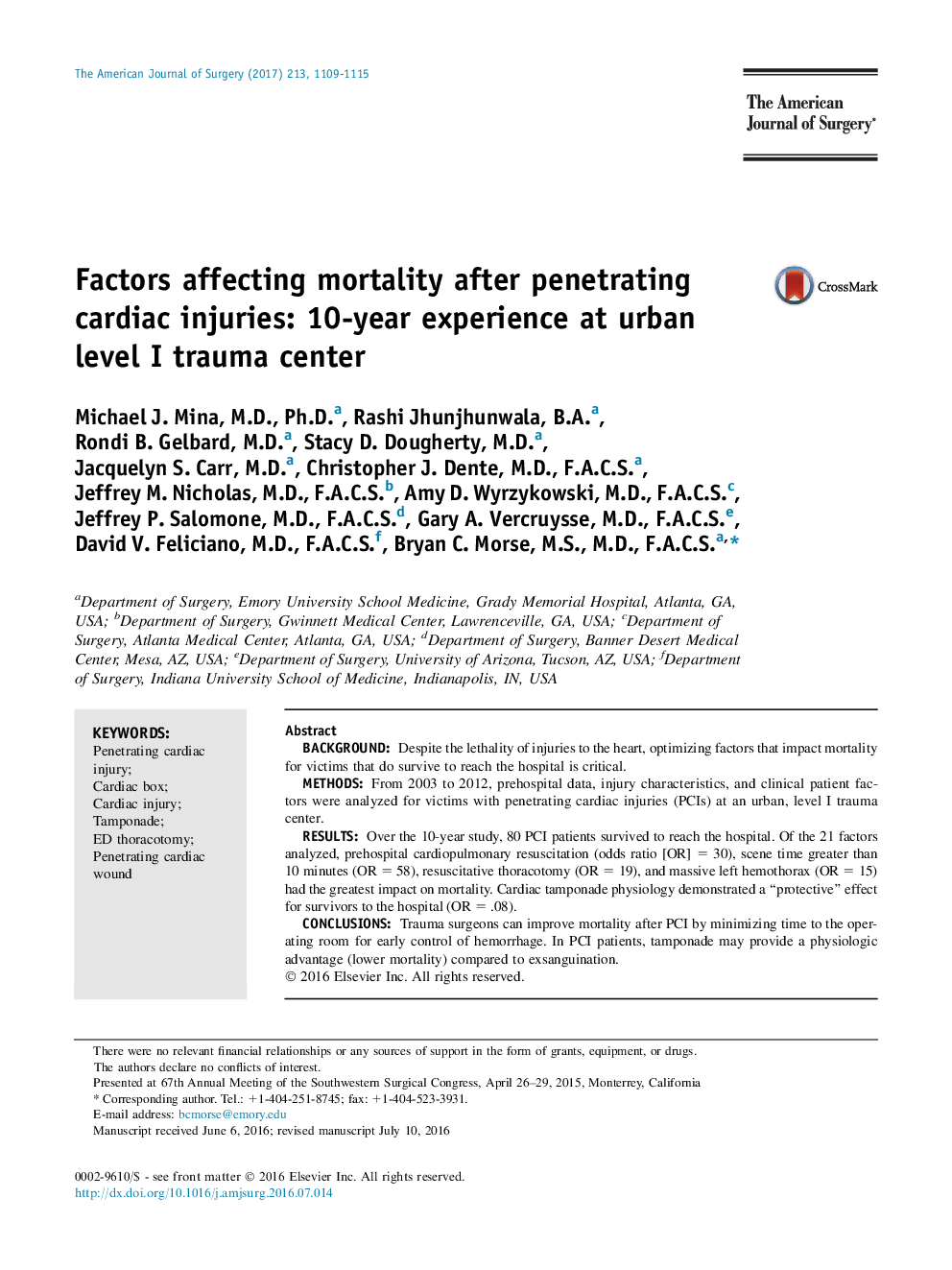| Article ID | Journal | Published Year | Pages | File Type |
|---|---|---|---|---|
| 5731255 | The American Journal of Surgery | 2017 | 7 Pages |
â¢Clinical indicators of severe shock had the greatest impact on mortality.â¢Scene and transit time ⥠10 minutes had negative affect on mortality after PCI.â¢Cardiac tamponade had a “protective” effect for survival for victims of PCIâ¢Prehospital, resuscitation, and operative factors were analyzed to assess their impact on mortality after penetrating cardiac injuries at a large urban level I trauma center.
BackgroundDespite the lethality of injuries to the heart, optimizing factors that impact mortality for victims that do survive to reach the hospital is critical.MethodsFrom 2003 to 2012, prehospital data, injury characteristics, and clinical patient factors were analyzed for victims with penetrating cardiac injuries (PCIs) at an urban, level I trauma center.ResultsOver the 10-year study, 80 PCI patients survived to reach the hospital. Of the 21 factors analyzed, prehospital cardiopulmonary resuscitation (odds ratio [OR] = 30), scene time greater than 10Â minutes (OR = 58), resuscitative thoracotomy (OR = 19), and massive left hemothorax (OR = 15) had the greatest impact on mortality. Cardiac tamponade physiology demonstrated a “protective” effect for survivors to the hospital (OR = .08).ConclusionsTrauma surgeons can improve mortality after PCI by minimizing time to the operating room for early control of hemorrhage. In PCI patients, tamponade may provide a physiologic advantage (lower mortality) compared to exsanguination.
